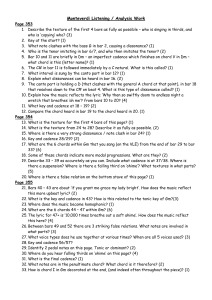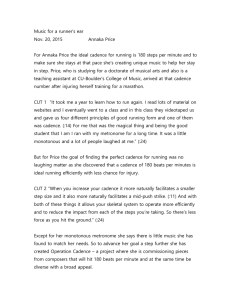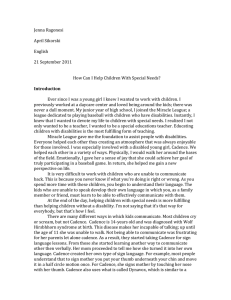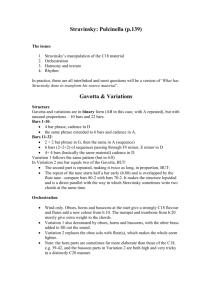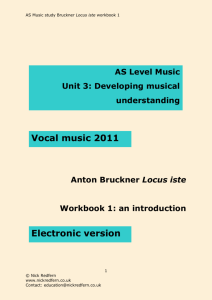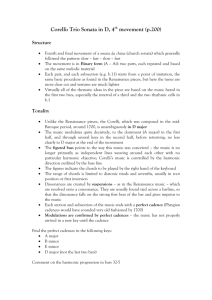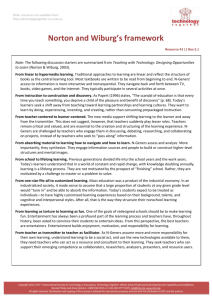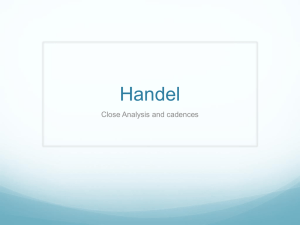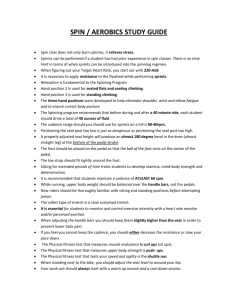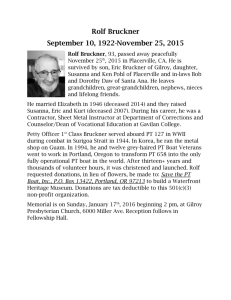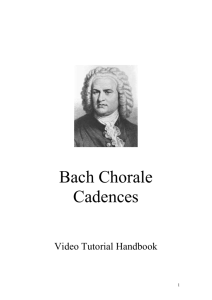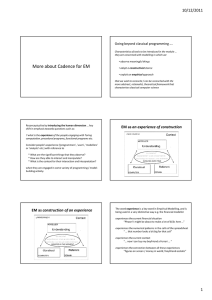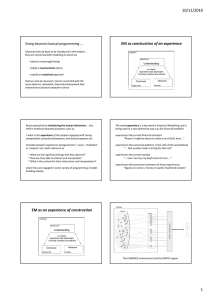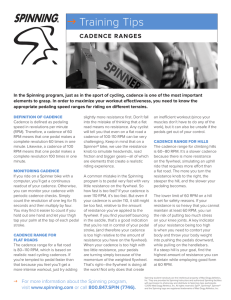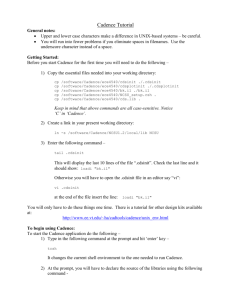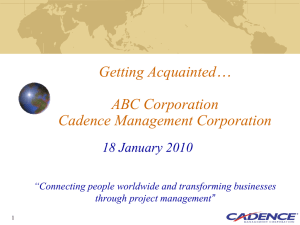AW Bruckner Locus iste
advertisement
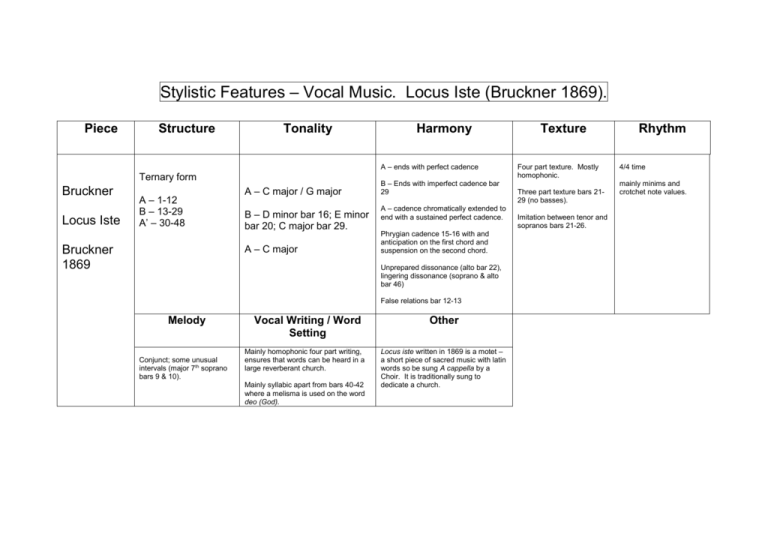
Stylistic Features – Vocal Music. Locus Iste (Bruckner 1869). Piece Structure Tonality Harmony A – ends with perfect cadence Ternary form Bruckner Locus Iste A – 1-12 B – 13-29 A’ – 30-48 A – C major / G major B – D minor bar 16; E minor bar 20; C major bar 29. A – C major Bruckner 1869 B – Ends with imperfect cadence bar 29 A – cadence chromatically extended to end with a sustained perfect cadence. Phrygian cadence 15-16 with and anticipation on the first chord and suspension on the second chord. Unprepared dissonance (alto bar 22), lingering dissonance (soprano & alto bar 46) False relations bar 12-13 Melody Conjunct; some unusual intervals (major 7th soprano bars 9 & 10). Vocal Writing / Word Setting Mainly homophonic four part writing, ensures that words can be heard in a large reverberant church. Mainly syllabic apart from bars 40-42 where a melisma is used on the word deo (God). Other Locus iste written in 1869 is a motet – a short piece of sacred music with latin words so be sung A cappella by a Choir. It is traditionally sung to dedicate a church. Texture Four part texture. Mostly homophonic. Three part texture bars 2129 (no basses). Imitation between tenor and sopranos bars 21-26. Rhythm 4/4 time mainly minims and crotchet note values.
